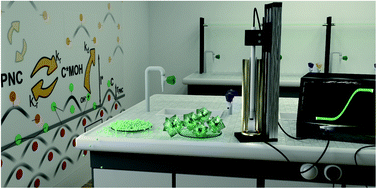A zeolite crystallisation model confirmed by in situ observation†
Abstract
Probing nucleation and growth of porous crystals at a molecular level remains a cumbersome experimental endeavour due to the complexity of the synthesis media involved. In particular, the study of zeolite formation is hindered as these typically form in multiphasic synthesis media, which restricts experimental access to crystallisation processes. Zeolite formation from single phasic hydrated silicate ionic liquids (HSiL) opens new possibilities. In this work, HSiL zeolite crystallisation is investigated in situ using a specifically designed conductivity measurement set-up yielding access to crystallisation kinetics. Based on the conductivity data and final yields, a crystallisation model explaining the results based on a surface growth mechanism was derived. The excellent agreement between experiment and theory indicates zeolite crystallisation from highly ionic media proceeds via a multi-step mechanism, involving an initial reversible surface condensation of a growth unit, followed by incorporation of that unit into the growing crystal. The first step is governed by the liquid phase concentration and surface energy, while the final step shows a correlation to the mobility of the cation involved.

- This article is part of the themed collection: Understanding Crystallisation


 Please wait while we load your content...
Please wait while we load your content...